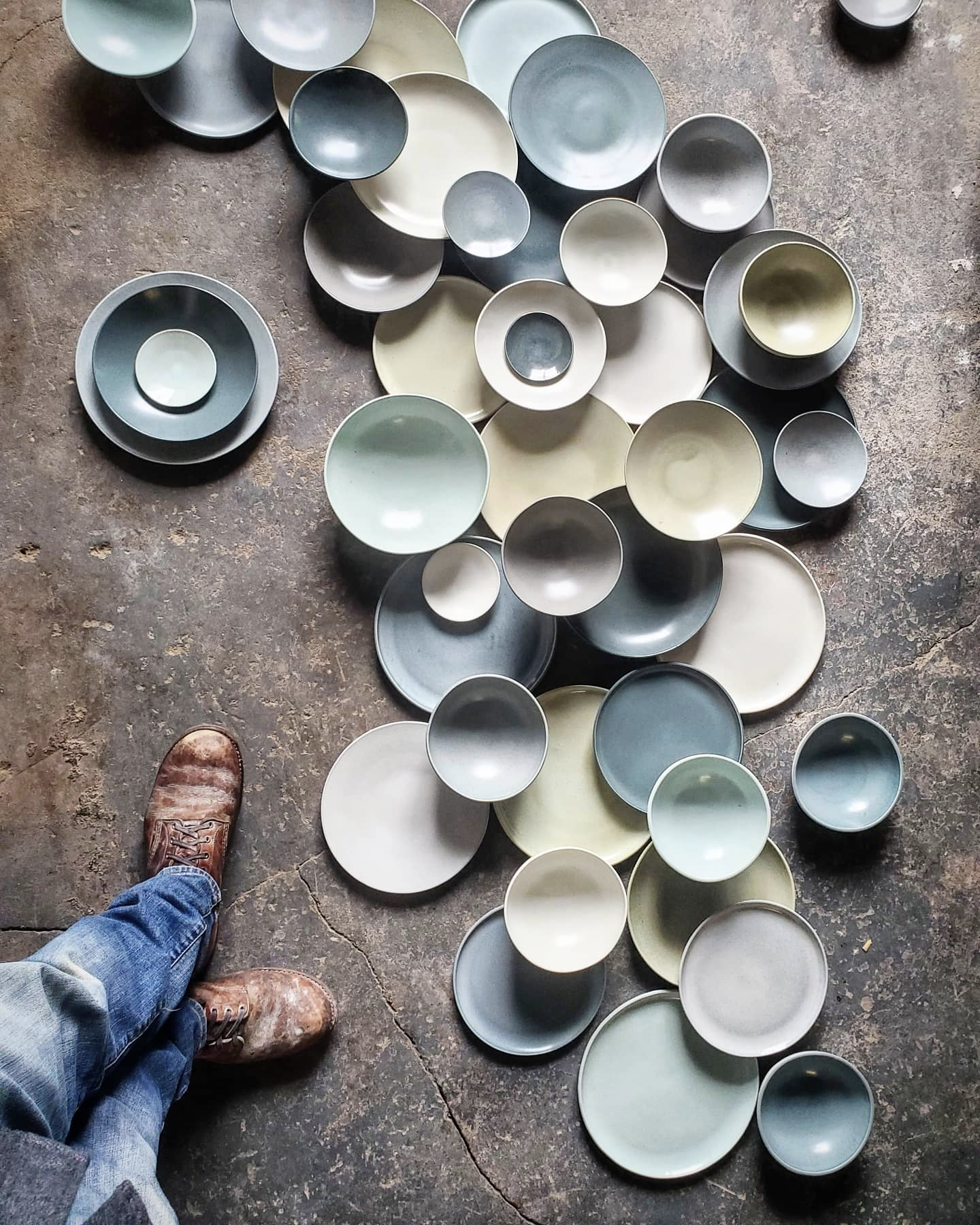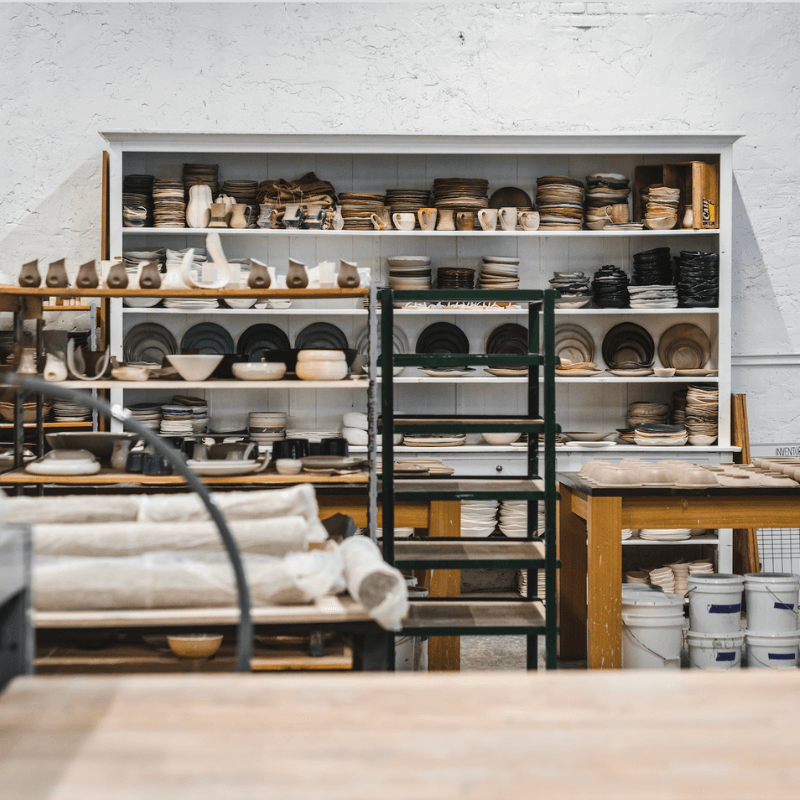May 10 & May 11 | Spring Market @ Makers Central
May 10 & May 11 | Spring Market @ Makers Central
For the Table
Guides
Ceramics, Porcelain, and Stoneware: Understanding the Differences
February 28, 2025 4 min read
Ceramics, Porcelain, and Stoneware: Understanding the Differences
When it comes to ceramics, one of the most common misconceptions is that all ceramics are stoneware. In reality, "ceramic" is a broad category that includes everything from the delicate translucency of porcelain to the rustic, earthy charm of earthenware. If you've ever wondered why your grandmother’s stoneware mixing bowl feels so different from your favorite porcelain teacup, the answer lies in the clay, the firing temperature, and the final structure of each piece.
Earthenware: The Ancient Classic
Fired at lower temperatures, earthenware retains a porous and slightly rough texture, often featuring warm, rustic tones. It’s one of the oldest forms of pottery, perfect for decorative pieces but less durable than its counterparts.
Stoneware: The Everyday Workhorse
Stoneware is fired at higher temperatures, making it non-porous, durable, and ideal for functional pottery like dinnerware and mugs. It maintains an organic aesthetic while standing up to daily use.
Porcelain: The Refined Performer
Porcelain is the most refined and strongest of the three, despite its delicate appearance. With a smooth, often glossy finish and a high resistance to wear, it's the top choice for fine dining and elegant table settings.
At Connor McGinn Studios, we choose high-fire porcelain for our Signature Collection because it balances strength with sophistication, creating dinnerware that elevates every meal.
What is the Most Durable Dinnerware Material
February 20, 2025 3 min read
Choosing the right dinnerware isn’t just about style—it’s about durability and functionality. From timeless porcelain to handcrafted stoneware, the right materials ensure your tableware stands the test of time. Explore the best options for resilient dinnerware and discover why handcrafted ceramics offer both beauty and strength.

Lichen Glaze & Copper: The Alchemy of Atmospheric Firing
February 20, 2025 4 min read
Lichen, Copper, and the Chaos of the Kiln: The Alchemy of Atmospheric Firing
In the world of ceramics, the firing process is a delicate balance between control and chaos. Unlike electric kilns, which offer a predictable environment, our natural gas kiln allows us to manipulate heat, pressure, and atmosphere to influence the final outcome of each piece. This method, known as atmospheric firing, creates unique and unpredictable effects, particularly with our Lichen glaze—a fascinating transformation driven by chemistry and fire.
At the heart of this process is copper, an element that, under different conditions, can appear as a gleaming metal or develop the iconic green patina of the Statue of Liberty. By carefully adjusting oxygen levels within the kiln, we accelerate this transformation in mere hours, yielding an array of stunning colors, from soft greens to unexpected pinks.
Despite our best efforts to create consistency, each firing is an experiment in controlled chaos. The stacking of pieces, glaze thickness, and cooling rates all contribute to the final result, ensuring that no two pieces are ever the same. This unpredictability isn’t a flaw—it’s a feature, a testament to the natural forces at play.
Every time we open the kiln, we witness the beauty of transformation—a reminder that ceramics, like nature, are never static. They are in a constant state of becoming, shaped by fire, chemistry, and a touch of alchemy.

What Are Seconds and Overstock?
February 06, 2025 3 min read
Not every ceramic piece is destined for a Michelin-starred restaurant—some have a different journey. Our Seconds & Overstock collection features handmade plates, bowls, and mugs with unique quirks or extra stock from custom restaurant orders. These pieces are fully functional, beautifully crafted, and available at a fraction of the price. By giving them a second chance, you’re embracing the beauty of imperfection while supporting sustainable, zero-waste craftsmanship. Want in? Sign up for our mailing list and be the first to shop our limited, one-of-a-kind sales!

What's the difference between Porcelain and Stoneware?
June 04, 2021 3 min read
Here's everything you need to know about the differences between these two popular dinnerware materials. For us, the two clay bodies we use (Porcelain and Stoneware) are both variations of clay dug from the earth which are then refined, formed by hand, glazed with our custom colors, and fired into functional pieces of pottery. The clay begins its journey on a mountaintop where deposits of kaolin and other minerals are slowly erod
Subscribe
Sign up to get the latest on sales, new releases and more …




